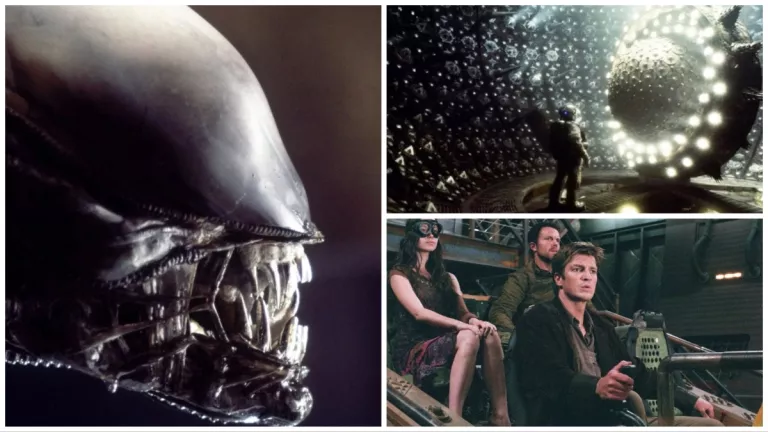Despite being more than 40 years old, the impact of Alien on film, television, and video games is still widely evident. Presented here are some of the most remarkable productions that were influenced by the Ridley Scott classic.
For those with artistic talent, here’s a creative challenge: devise a dining area for a blue-collar spaceship crew that deviates entirely from the design of the dining area on the commercial towing vessel USCSS Nostromo. The catch is that this design has to be created without referencing the ubiquitous spaceship designs that have been influenced by Ridley Scott’s Alien. Let us know how many iterations it takes to get it just right.
Prior to the release of Ridley Scott’s Alien, spaceship designs had been portrayed as naval ships, wagon trains, and even shabby VW camper vans. The Nostromo, on the other hand, presented a unique vision of a spaceship as a long-haul truck, ocean tanker, and oil rig. This distinctive design has since become a common aesthetic in spaceship depictions, much like the memorable alien itself. To inspire your creativity, here are some of the most notable works that have been influenced, borrowed from, or outright stolen this aesthetic.
Outland (1981)
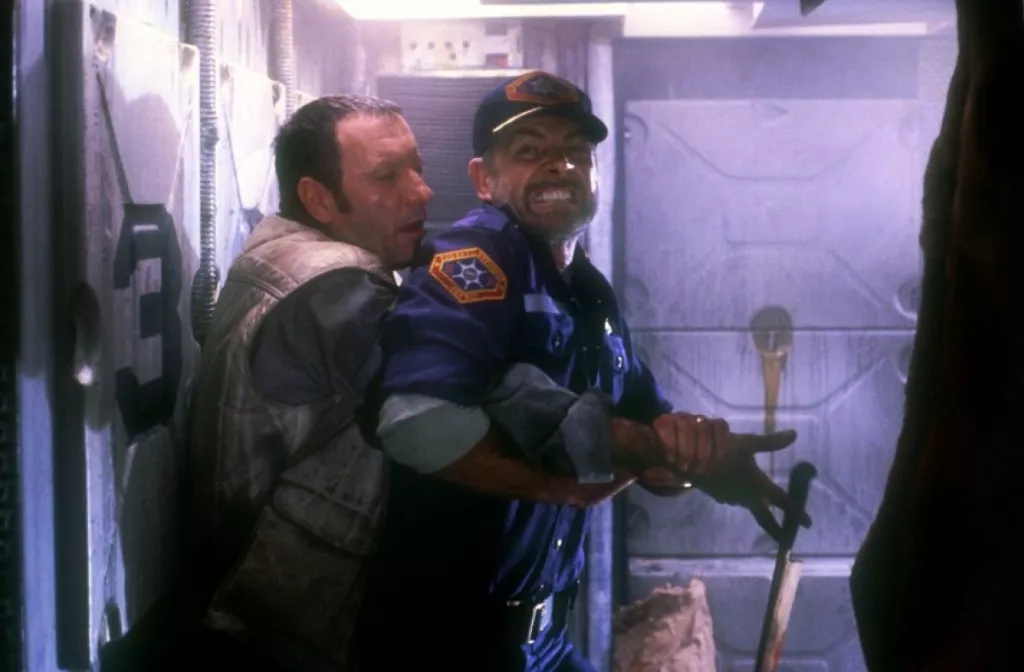
In Outland, Sean Connery portrays an outer space lawman stationed at a mining facility that bears a striking resemblance to those operated by Weyland-Yutani. The film’s aesthetic is immediately recognizable, with corridors that alternate between sterile, brightly-lit administrative zones and grimy industrial areas. The uniforms worn by the facility’s personnel also fit this style. Computer consoles feature green and black cathode ray tube monitors, and bulky keyboards. Heavy metal doors, grated floors, dripping pipework, and extraction fans complete the industrial look.
Despite its similarities, Outland also shares the same dehumanizing quality of the environments depicted in the original Alien film and its finest sequels. This mining facility, to borrow from Le Corbusier, is essentially “a machine for living in,” with humans serving as merely one of its components. It is this dehumanization that Connery’s character battles against throughout the film.
Moon (2009)
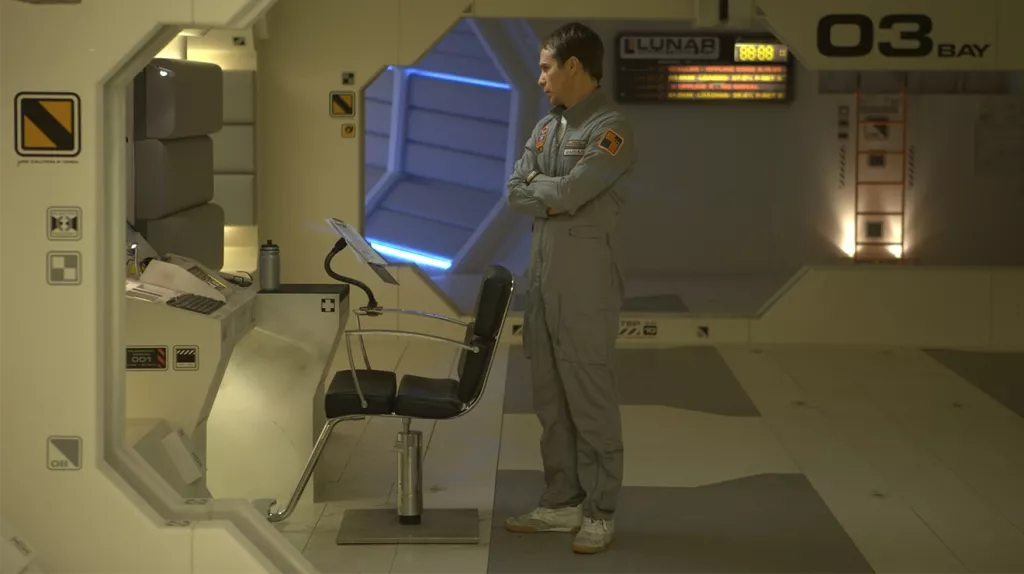
Duncan Jones’ Moon features a helium mining facility that could easily be on the same balance sheet as the ones in Outland and Alien’s Nostromo. While Moon shares Outland’s stark white living spaces, it also adds a realistic touch with surfaces that have become discolored and stained over time. The set is filled with post-it notes, bored graffiti, and unfinished personal projects, lending an authentic “used” look to the environment.
Although Alien was not the first film to portray “used” spaceships, the interior of the Millennium Falcon may have been the first exposure for many viewers. However, the Millennium Falcon feels like Han Solo’s personal vehicle, built to a human scale and serving as both a working vehicle and a home. The Nostromo, on the other hand, with its crew of seven, is much larger than the Enterprise, with countless winding hallways, and is dwarfed by the massive mining platform it is towing. In contrast, Moon’s habitable base is relatively smaller (excluding the large cellar) and the lunar landscape outside dwarfs the human element within.
Pitch Black (2000), Riddick (2013)

The connection between Pitch Black and Alien is evident in their shared plot of travelers being attacked by alien predators. This similarity is also reflected in the space tech aesthetics of both movies, including their threequel, Riddick. However, The Chronicles of Riddick breaks away from this pattern as it focuses on empires, armies, and space royalty rather than fugitives and transport ships.
For those seeking spaceship aesthetics that differ from the Nostromo style, recent adaptations of Dune and Foundation offer sleek, almost organic ship designs that fit their respective stories of space empires and royalty. But for a more subtle deviation from the norm, the movie Prometheus is worth exploring.
Prometheus (2012), Alien: Covenant (2017)
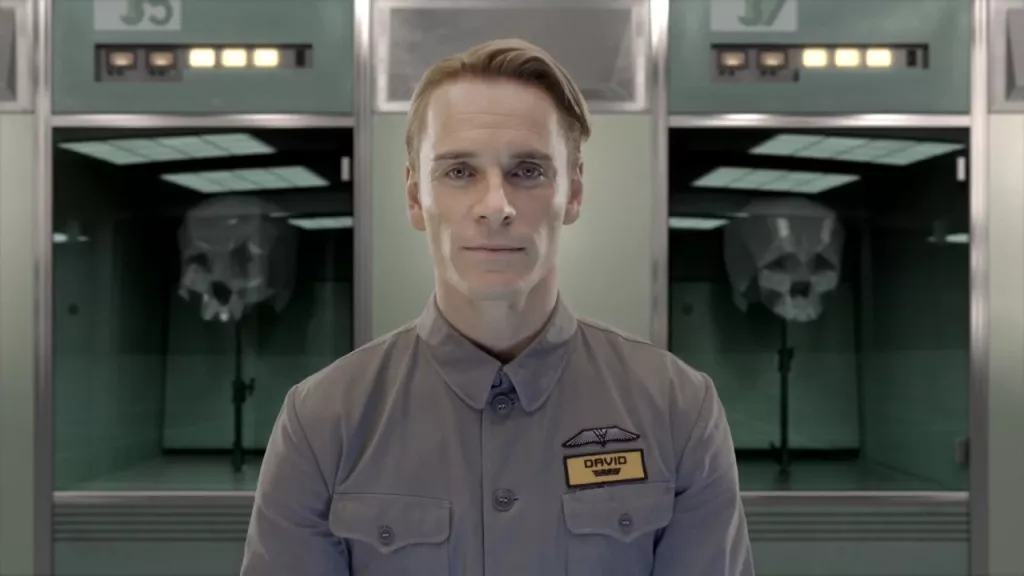
These movies represent a significant deviation from the Nostromo aesthetic. While they share some common visual elements, Prometheus and Alien: Covenant break away from the clunky keyboards and CRTs of Alien and instead feature sleek, high-tech holographic displays and transparent screens. This departure from the classic sci-fi look makes sense given that neither ship is a utilitarian space freighter like the Nostromo. Prometheus is a luxurious research vessel funded by a billionaire, while Covenant is a colony ship transporting thousands of people on an ambitious expedition. It’s possible that the characters’ self-perception as pioneers and explorers contributes to their poor decision-making compared to the more practical truck drivers on the Nostromo.
Serenity (2005)
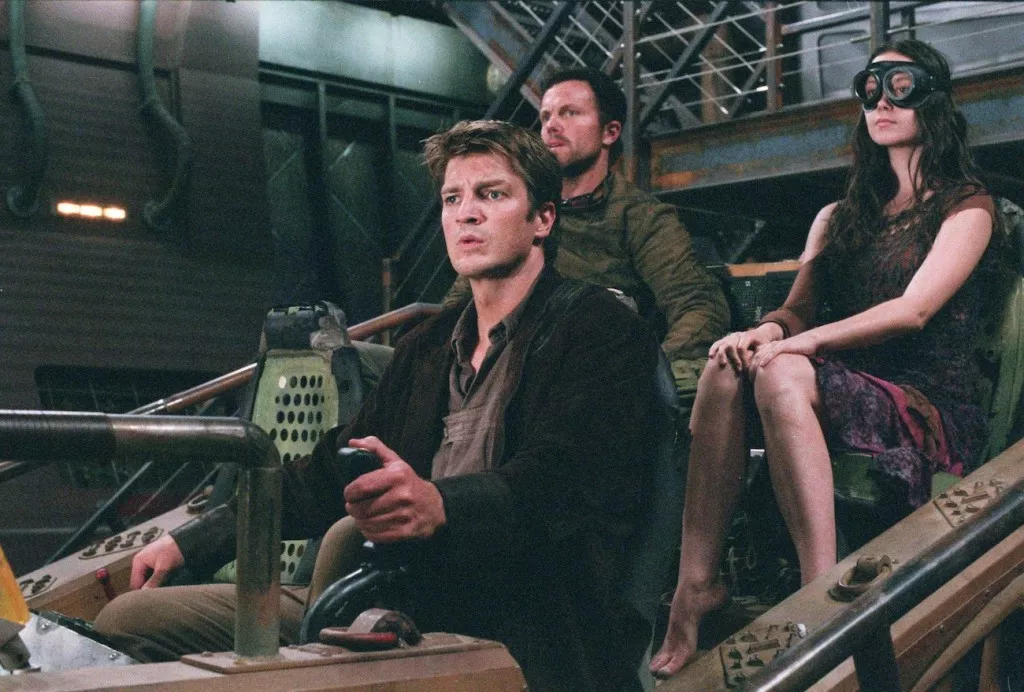
Space Sweepers (2021)

The movie Space Sweepers is set in a world that resembles Alien’s dystopian universe, where space salvagers with little money and debt scrape by working for nefarious mega-corporations. However, the interior of their spacecrafts, as depicted in this concept art, has a distinct feel from the Nostromo. Instead of being tidy and sterile like a cryo-sleep chamber, it is cluttered with paperwork and laundry hanging in every available space, akin to the cab of a truck driver. This portrayal of a lived-in space environment is a rare instance of a “blue collar spaceship” that doesn’t mimic the Nostromo, as discussed at the start of this article.
Doom (2016)
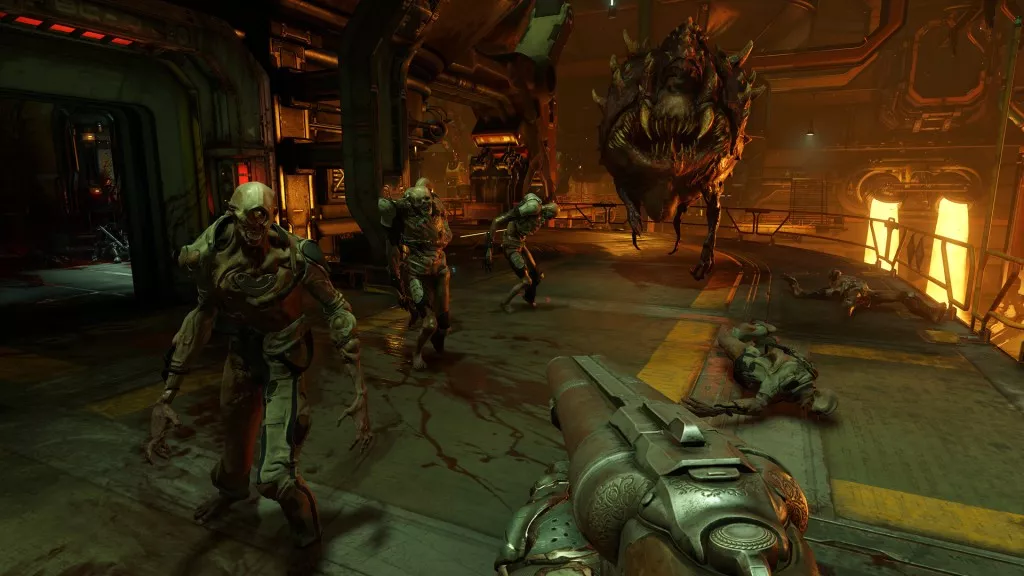
We’re not talking about the cringe-worthy Dwayne “The Rock” Johnson movie, but rather the video game, specifically the 2016 version, which features a sinister megacorporation with literal ties to Satan and an energy company on Mars fueled by Hell itself. However, let’s face it, this applies to about 90 percent of all space-themed video games, including Halo, Dead Space, Gears of War, and The Outer Worlds. If you find yourself on a decaying spaceship with a shotgun attached to the bottom right of your field of view, chances are the environment will be clunky, industrial, and retro by now.
The reason for this is that Alien was a movie that perfected environmental storytelling long before video games even had a term for it. One only needs to look at the “Semiotic Standard,” a brilliantly designed series of symbols created by the legendary Ron Cobb, that can be spotted throughout the Nostromo.
It’s no surprise that the 2014 video game Alien: Isolation features intricately detailed and authentic environments that would be incredible to explore if you weren’t always on the brink of a panic attack or under threat of an Alien tail bursting through your ribcage.
Sunshine (2007)
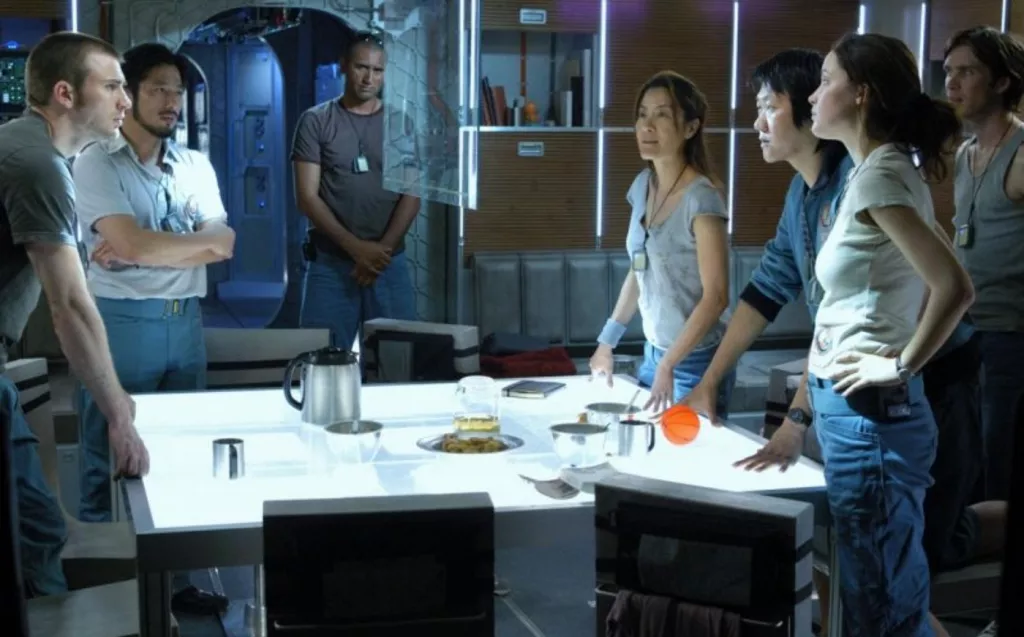
Sunshine is a prime example of a subgenre within the Alien aesthetic. The film showcases the Alien-inspired emphasis on functional design, exposed workings, and technology that is recognizable but also shinier, cleaner, and newer. This aesthetic can also be observed in other works such as The Martian and the Apple TV series For All Mankind. The upcoming game, Starfield, describes this style as “NASA-punk,” which consciously strives for realism, featuring centrifugal rotation rather than handwavium to generate gravity and touch screens with switches and dials.
Despite this, the clunky and outdated interfaces of the Alien universe persist because they are still relevant. While we view this on sleek HD touchscreens, it is only recently that spaceships have caught up. For most of the 21st century, the only means of space travel were Soyuz capsules from the 1960s and space shuttles from the ’80s. It’s no wonder our sci-fi aesthetics confuse “grounded and realistic” with “absurdly retro.”
Red Dwarf (1988-1999)
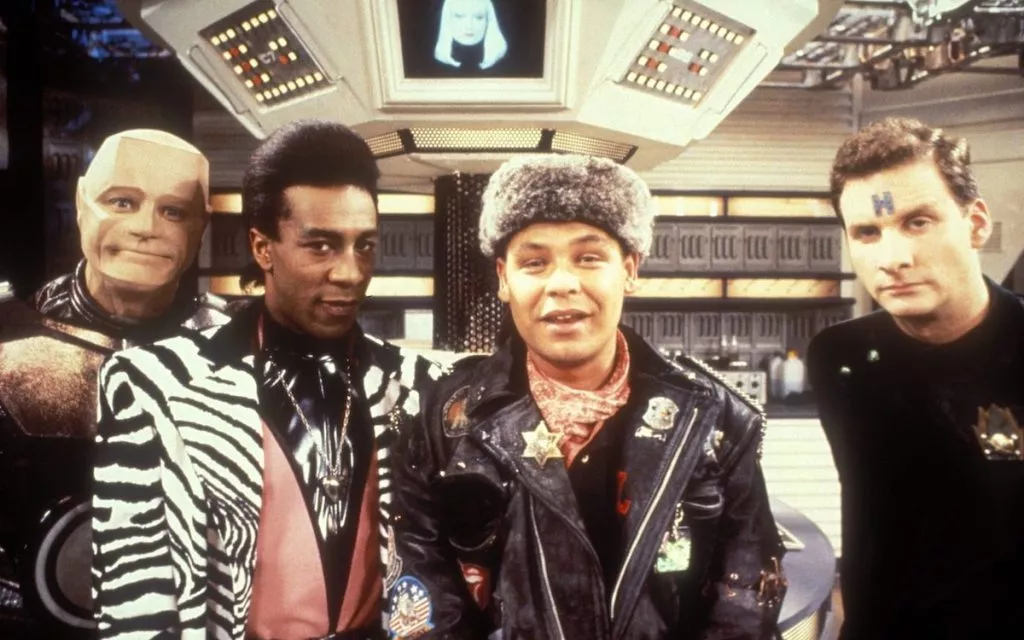
However, the distinctiveness of the Nostromo style may not lie in its room decorations, but rather in the rooms where we spend our time. It’s no coincidence that the challenge at the start of this article was to design a dining area. Ships with Nostromo-chic have living spaces that are much more frequently used than the bridge or engine room.
Red Dwarf, for example, drew heavily from Alien and featured corridors that could be easily mistaken for those on the Nostromo, with a captain straight out of LV-426 colony. In Red Dwarf, the repairmen characters seldom venture into the ship’s bridge or laboratories, and the majority of the action takes place in the corridors or bunk beds. This aesthetic feels grounded because we are more familiar with dining areas, corridors, and bunk beds than we are with control rooms or laboratories, not because clunky retro-tech feels realistic for a 23rd-century spaceship.
Event Horizon (1997)
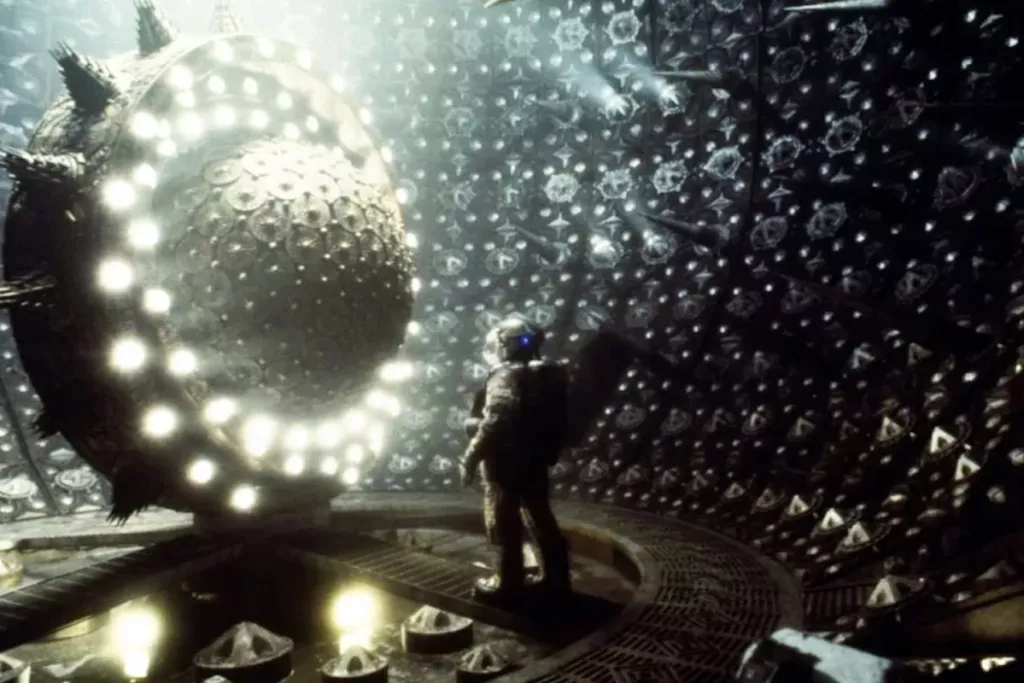
The Lewis & Clark spaceship in Event Horizon could easily have been the ship that rescues Ripley in Aliens. This film shows us the importance of spaceships that feel like they have been lived in. The contrast between the Lewis & Clark and the Event Horizon is like the difference between Kansas and Oz. On the Clark, we see a dining area and bunk beds, similar to the Nostromo, complete with stickers on the wall and evidence of a messy, yet functional, workspace. On the Event Horizon, we are taken through bridges, airlocks, and laboratories, with sharp curves and spikes that warn viewers this is not a place for people to be. The industrialized look is far from the Nostromo’s aesthetic.
Stories about space travel are about going as far from home as possible. Perhaps the reason the Nostromo look has remained relevant is that, while it may not seem like a comfortable place to be, it still feels like home. The familiarity of the living spaces, even in such an alien environment, gives us a sense of comfort and grounding.

